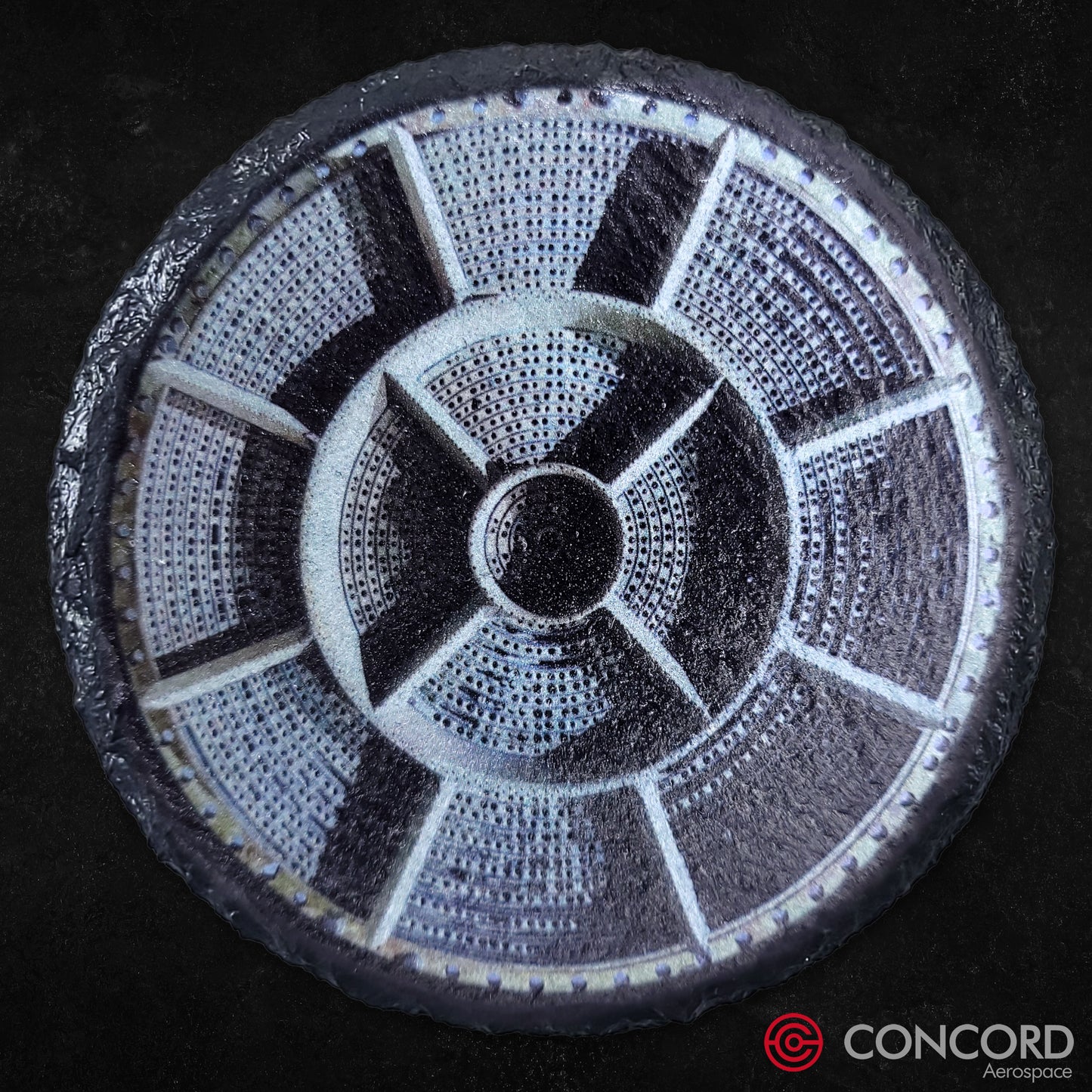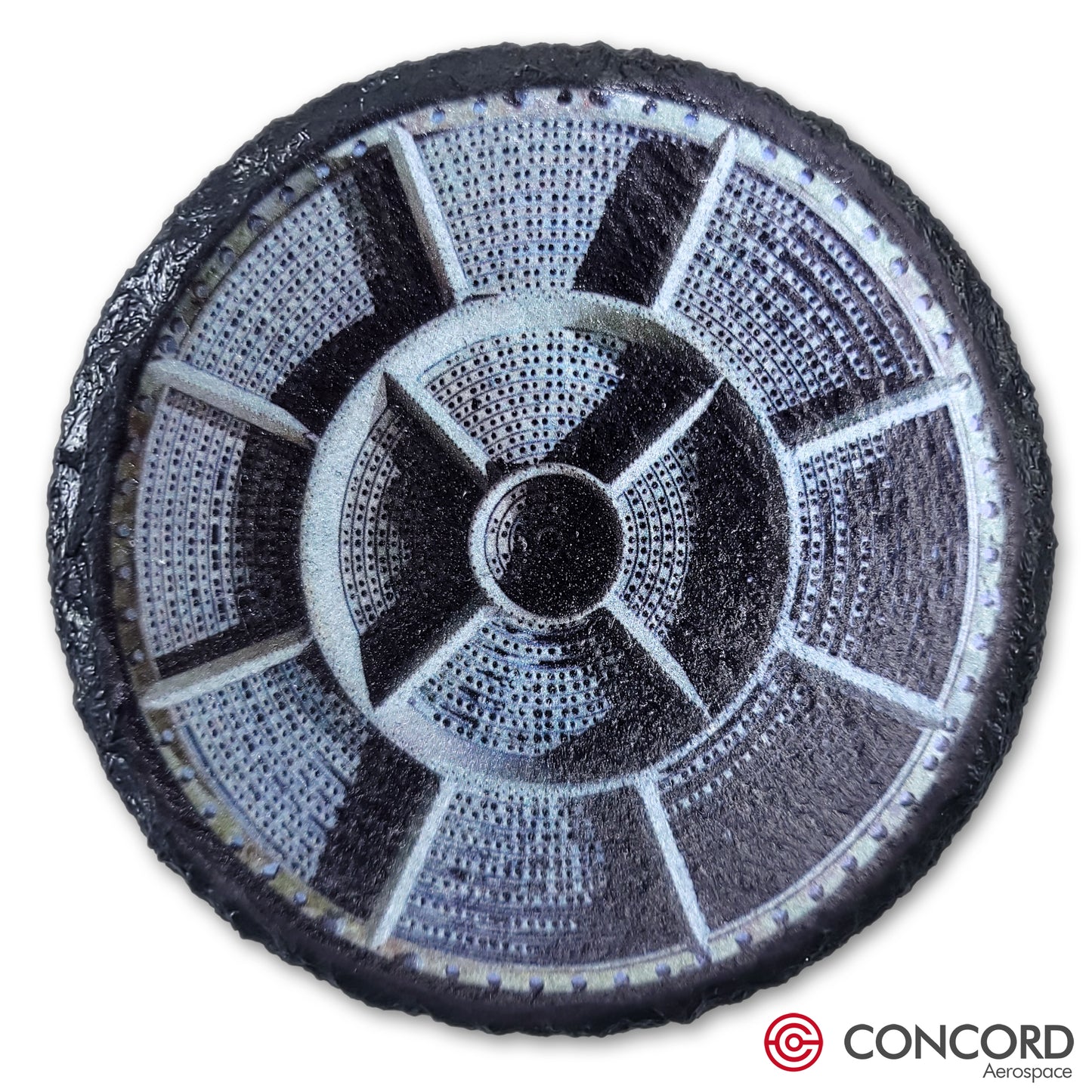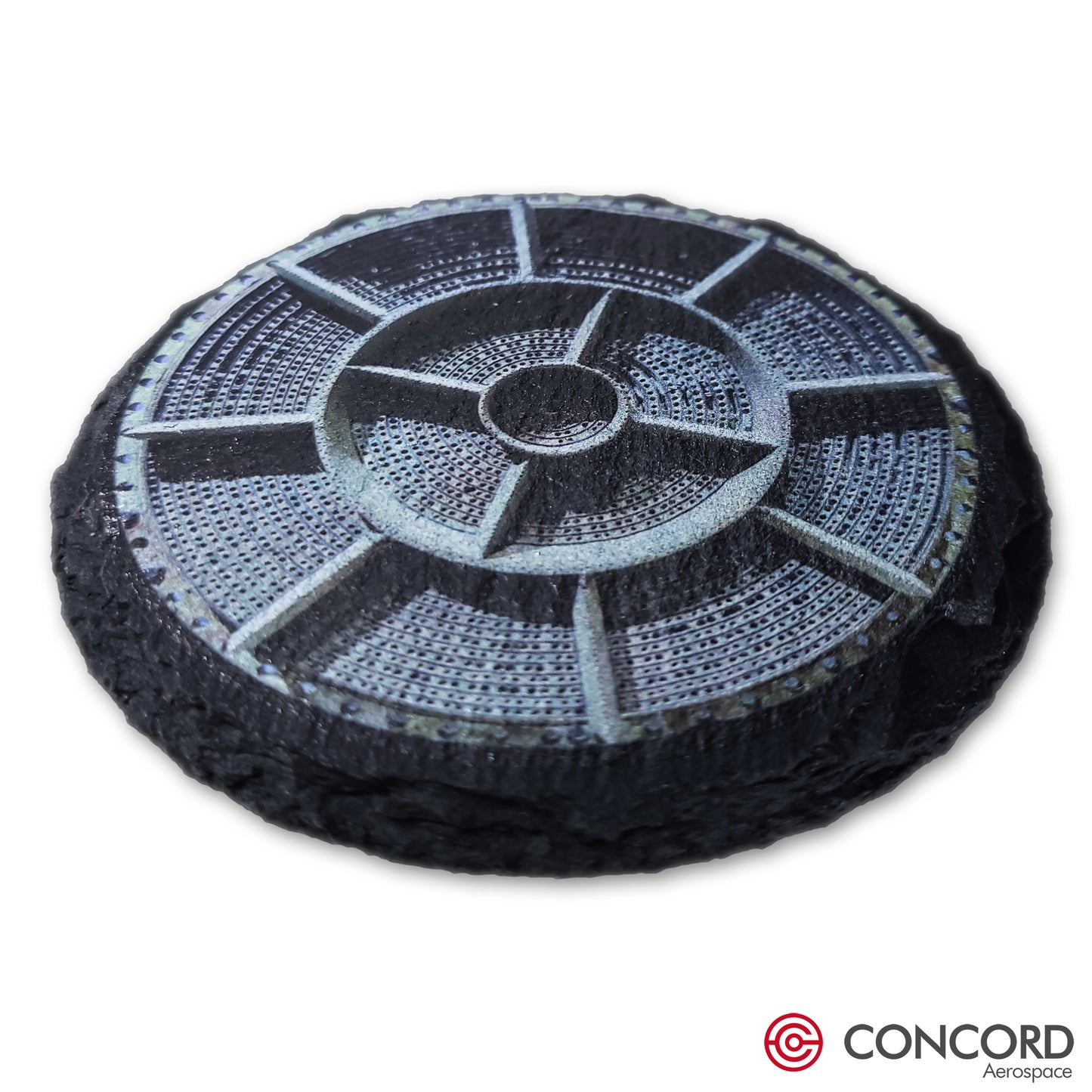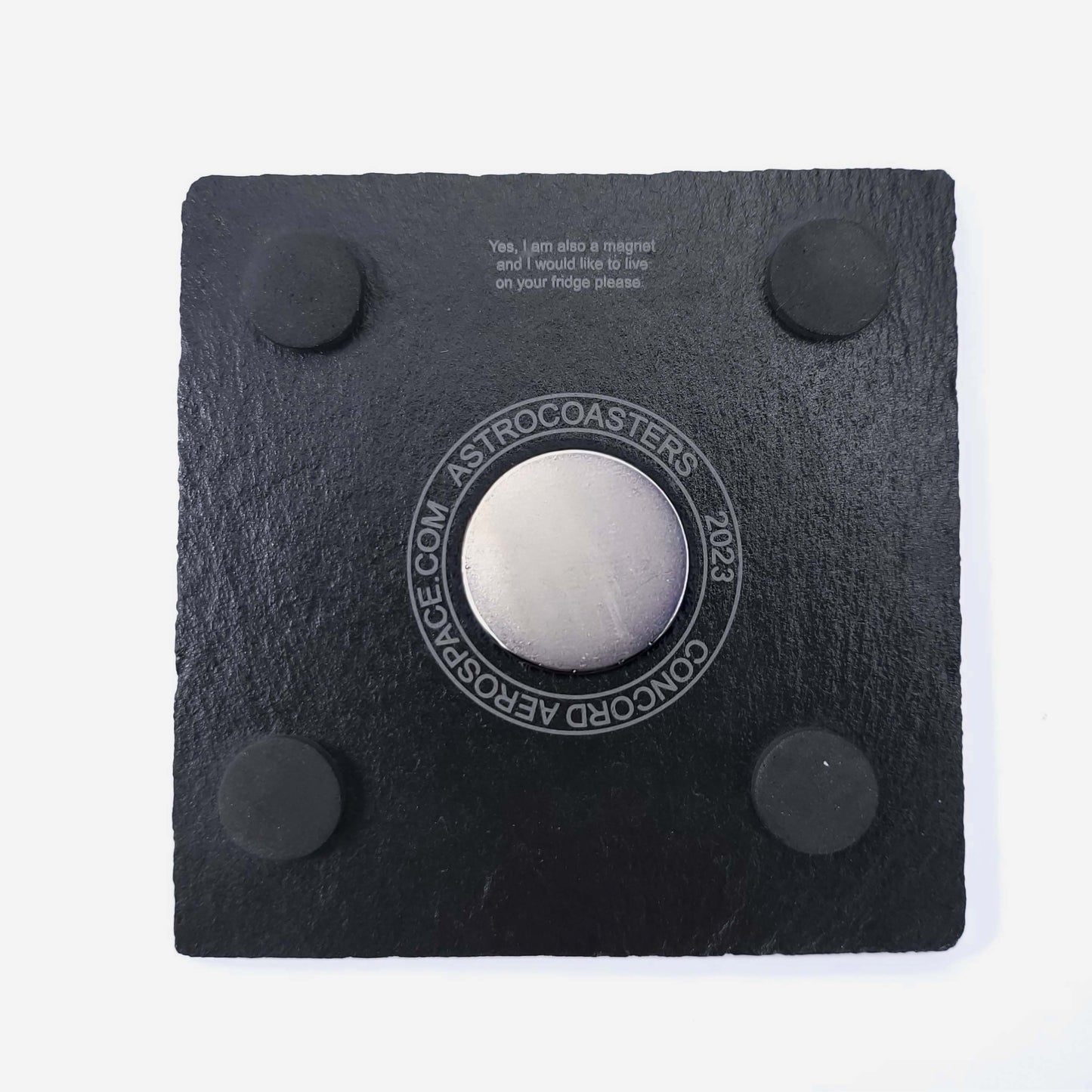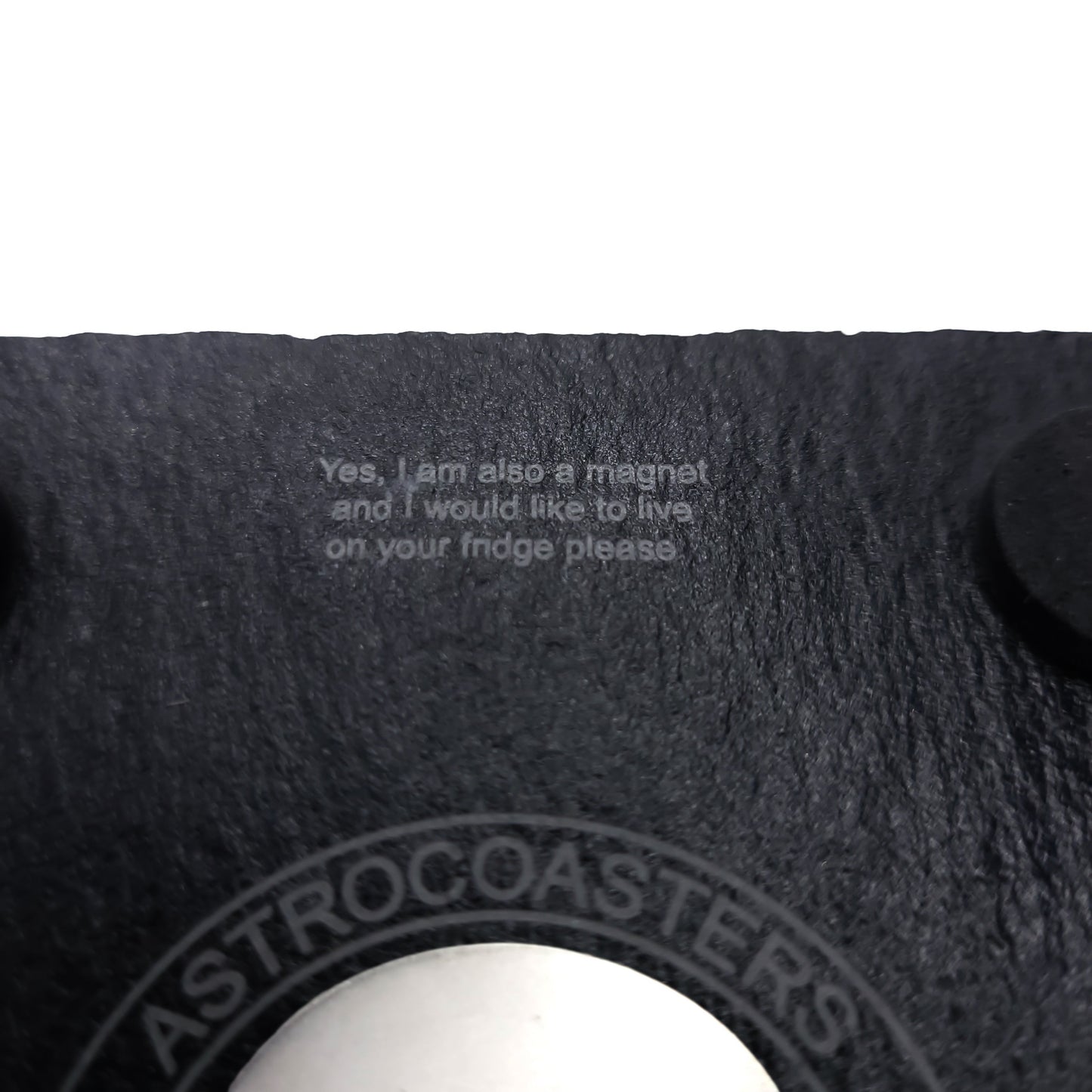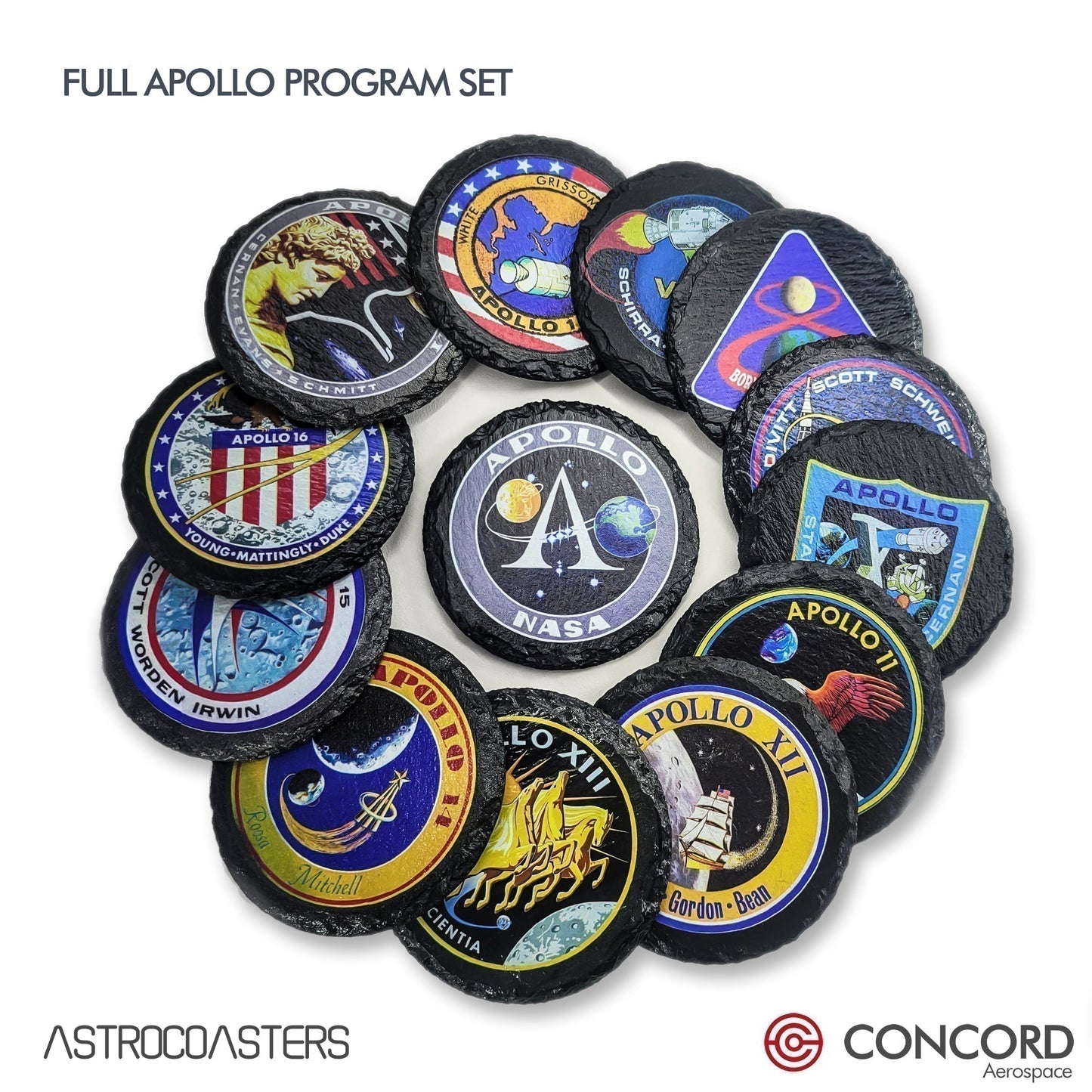SATURN F1 ENGINE INJECTOR PLATE SLATE COASTER
SATURN F1 ENGINE INJECTOR PLATE SLATE COASTER
Couldn't load pickup availability
SATURN F1 ENGINE INJECTOR PLATE SLATE COASTER
Lifting the massive Saturn 5 rocket off the launch pad necessitated five powerful F1 engines on its first stage, each capable of generating 1.5 million pounds of thrust. To achieve such a tremendous amount of thrust, a substantial quantity of RP1 fuel and liquid oxygen needed to be pumped into the thrust chamber. Once there, the two propellants would combust, propelling the Saturn 5 away from the launch pad. Within a little over two minutes, the first stage alone would consume a fuel equivalent to an Olympic swimming pool.
FULL STORY OF THE F1 ENGINE INJECTOR PLATE
The responsibility of developing such a potent engine fell to Rocketdyne. Several years prior, Rocketdyne had designed the F1 engine for the US Air Force. However, when the Air Force failed to find a use for an engine of such power, its development was halted until NASA stepped in.
In June 1962, Rocketdyne engineers prepared to conduct a long-duration test of the F1 engine. Unfortunately, the ordeal ended in a catastrophic explosion as the engine ignited and the turbopumps spun up. Multiple subsequent explosive tests were conducted before the engineers finally identified the issue of combustion instability. This phenomenon occurs when the propellants burn unevenly in the thrust chamber, causing significant pressure fluctuations. The F1 engine suffered immensely from this problem, as these pressure swings occurred a staggering 2000 times per second, ultimately destroying the engine.
At this juncture, the Apollo program was well underway. NASA required a fully functional engine for its upcoming crewed flights, which were only a few years away. Engineers began concentrating on the injector plate, the component responsible for feeding the fuel and oxidizer into the thrust chamber.
However, finding a solution to this problem was not straightforward since an engine of such magnitude had never been created. Inspiration was drawn from one of the earliest rocket designs, the V2 rocket developed by Wernher von Braun during World War II. The V2 rocket featured multiple nozzles on its injector plate, dividing the combustion into distinct streams.
The engineers believed that the controlled sections in the V2 engine eliminated the possibility of combustion instability. To address the issue without requiring a complete redesign, engineers incorporated a series of baffles into the F1 engine's injector plate, effectively dividing the combustion into different zones.
After experimenting with various baffle designs, the engineers discovered a configuration that appeared to stabilize the combustion process. This new design was thoroughly tested, and the engine performed flawlessly during burns. However, the engineers were still determining whether the problem was entirely resolved.
Many were concerned that the additional forces and vibrations experienced during flight could reintroduce instability into the engine. To conduct a comprehensive test of the new design, NASA placed a small explosive device at the center of the injector plate, detonating it as soon as the engine ignited. The concept behind this test was to create an artificial and extreme amount of instability within the engine, surpassing what it would naturally experience. When the explosive device detonated, the flame inside the engine became highly unstable.
However, the baffles on the injector plate quickly mitigated the pressure fluctuations, restoring stability to the combustion process. NASA conducted multiple explosive tests to ensure that the issue of combustion instability had been entirely resolved.
From the initial launch of the Saturn 5 rocket to its final mission, 65 F1 engines propelled numerous astronauts into space without encountering any instability problems. Reflecting on a time when rocket engines were designed using slide rules, the ingenuity required to overcome these monumental challenges is genuinely remarkable.
DETAILS
- 1 Square Slate Coaster
- 4" x 4" (10.16cm x 10.16cm)
- Magnetic back for the optimum display and vertical storage options.
- Laser-etched back panel.
- Special paint and protective coating application for full-color artwork.
- Aerospace Grade Satin Clearcoat Finish Coat Application.
- Resistant to stains and scratches.
- Slate does not need as much maintenance as other stones and can be washed with warm water and a small amount of mild detergent when cleaning is needed.
SHARE SATURN F1 ENGINE INJECTOR PLATE SLATE COASTER
